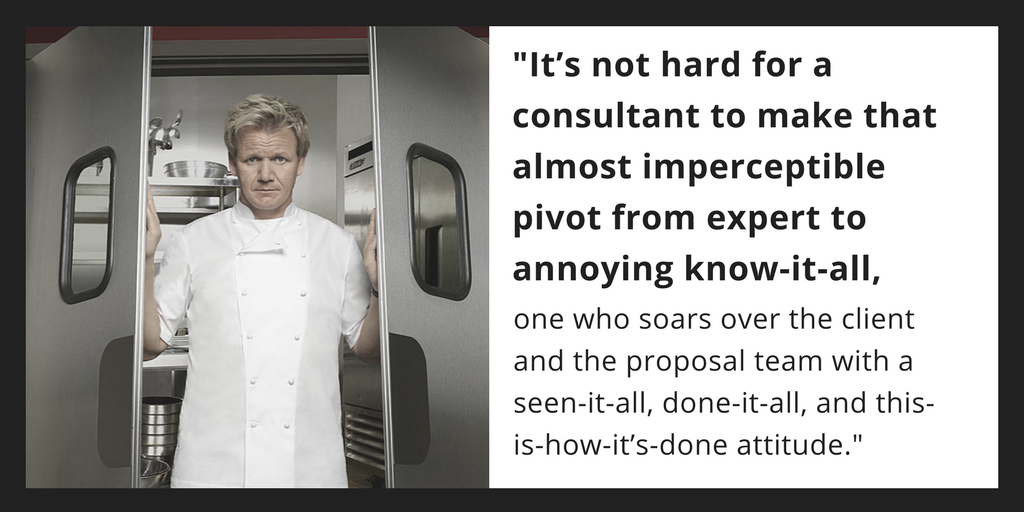In this post, the final of my Category Management Series, I am going to make a few suggestions for Business Development and Strategy Professionals to add to their Bid and Proposal “New Year’s Resolution” list. These resolutions are primarily based on the key trend of contract consolidation through Category Management.
Though it is a pretty well-documented fact that most resolutions fail – I hope that you are able to carry these goals well into the year…in addition to your resolution to cut carbs and stop checking your email on the weekends.
Resolution #1: Focus on Compliance and Accountability
Compliance standards are something that all contractors and Government officials struggle with. In an era of General Services Administration (GSA) schedule changes, defense acquisition reforms, and procurement mandates – it is imperative that we all pay a little more attention to our compliance waistlines.
If 2016 taught me anything, it was that compliance and attention to contractual detail is king. My 2016 seemed to be predominately dictated by large GSA proposal bids - RE: Human Capital and Training Solutions (HCATS), Veterans Technology Services 2 (VETS 2), Alliant 2 and One Acquisition Solution for Integrated Services (OASIS).
Compliance and attention to contractual detail is king.
For those that participated in the submission of one or all four of these opportunities; you know that the response requirements were different than your typical technical and management approach response. These four efforts brought back the proposal management basics. It stripped away the “hot button” verbiage, manipulated pricing, and the stretched-truth sales pitch. Instead, it forced you to focus on provable facts. As a Proposal Management traditionalist I will be the first to admit it took me and my clients a minute to adjust to the “GSA Model.”
| Read Part 1 of this series What is Category Management?
2016 was the year of the new “GSA Model” – and I believe, because of Category Management, it is here to stay. The “GSA Model” implements an evaluation method with three main characteristics that drive home compliance: 1) an objective scorecard; 2) subjective information that can be monitored; and 3) a space for innovation that can be proven. The “GSA Model” relies on “facts” of your experience rather than a technical or management approach. “Facts” include signed documents detailing your company’s experience from the Contracting Office; various bits of information provided on FPDS and/or PPRIS/CPARS; and official (and signed) documents from various Government offices to prove claims for contract awards, accounting systems and certifications.
The “GSA Model” has been predominately applied to Multiple Award Contracts (MACs), but its influences can be seen on various sized Task Orders (TOs), Single Award Delivery Orders (DOs), etc. In 2017, you can expect to see the Government further lean on the “GSA Model” due to the recent findings cited in the U.S. Government Accountability Office (GAO) Annual Report to Congress for Fiscal Year 2016.
2016 was the year of the new “GSA Model” – and I believe, because of Category Management, it is here to stay.
The “GSA Model” is not a new proposal model (i.e. OASIS 2013) – but it is becoming more of the standard. It is the Government’s response to lackluster submissions from industry that straddle the line between non-compliance and compliance.
The annual report cites that GAO saw a slight uptick in protest (up 6% from the year before); as well as an increase in sustains. In summary, GAO came down on the side of companies challenging federal procurement decisions more often than in any year in almost a decade. GAO cites that the most common reason for ruling in the protestors’ favor were that agencies reached unreasonable conclusions about bidders’ technical capabilities, past performance, cost; or used “flawed” selection criterion.
In order to avoid and/or combat the uprising of GAO protests as well as sustains, it is in the Government’s best interest to take the path of least resistance. The “GSA Model” reduces most issues within the long pursuit cycle, which makes it appealing to both Government agencies and contractors. Under the “GSA Model”, the difference between winning and losing is clear-cut, fairly established, and difficult to protest. By eliminating the subjectivity within the proposal evaluations, the Government is able to drastically reduce the number of pre- and post-award protest.
The “GSA Model” is a pain – but it makes industry look in the mirror before submitting a response. Even if the Government moves away from this method – I believe that Business Development and Strategy Professionals should incorporate the “GSA Model” into their review cycles for all bid decisions and proposal submissions. Using this as a baseline will clearly show you if your company should be pursuing an opportunity, as well as prove an effective compliance check prior to submission.
Resolution #2: Don't Discount Simplified Procedures
In March 2016, Bloomberg Government published an article stating that Simplified Acquisition Procedures (SAPs) had hit a five year high, and that it was likely to continue. SAP spending has grown – even though the federal market has shrunk. Rule changes have revised the threshold amount, and the Government is relying on the SAP competition procedure to avoid protest delays. Business Development Professionals should encourage the use of SAPs, which limits their workload and reduces the chance of losing bids.
Resolution #3: Embrace Your Creativity
This resolution is mainly aimed at information technology (IT) providers, but its message spans all service areas; be more creative when it comes to selling your company and your services. The industry is allowing you to color outside the lines – so do it. In 2016, the Government increased their use of unconventional methods to engage the private sector in pursuit of solutions to Government-wide problems. Examples include:
- Department of Homeland Security (DHS) opened an office in Silicon Valley and released its Innovation Other Transaction Solicitation (OTS), which has reduced some requirements of typical procurement contracts to make it easier and faster to submit proposals and award contracts.
- The Department of Defense (DoD) created a “Hack the Pentagon” program in which the agency paid friendly hackers to find and report DoD network vulnerabilities. The program cost DoD $150,000; it would have cost an estimated $1 million if they had hired a contractor to do it.
- The White House hosted a hackathon to motivate technology companies to find solutions to the gender pay gap.
These types of programs have proven to be successful not only in bringing outside players to the game, but also by saving Government money and shortening the time to reach solutions. In 2017, we can expect to see an increase in creative methods for involving the technology sector.
In conclusion of this series…
In September 2016, I set off to explore some unanswered questions I had on Category Management:
- What is Category Management?
- What are the pitfalls and upswings of Category Management for government contractors?
- What does Category Management have to do with me the Business Development professional?
- What impact is Category Management going to have on businesses (small, mid, and large) and their strategy to successfully market and grow their business.
And yet with a new Administration coming in 2017, I have even more questions regarding Category Management. This includes, will the new Administration be likely to reject it altogether?
However, after months of research, answering some questions and raising others – I think it is safe to say that even if Category Management runs out of steam there are still imperative lessons that can be taken from this initiative and applied to our everyday Business Development Acquisition Lifecycle.
Thank you for following my series on Category Management. I hope you have found it useful. If you have any questions please comment below!







